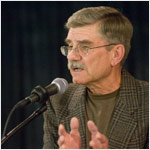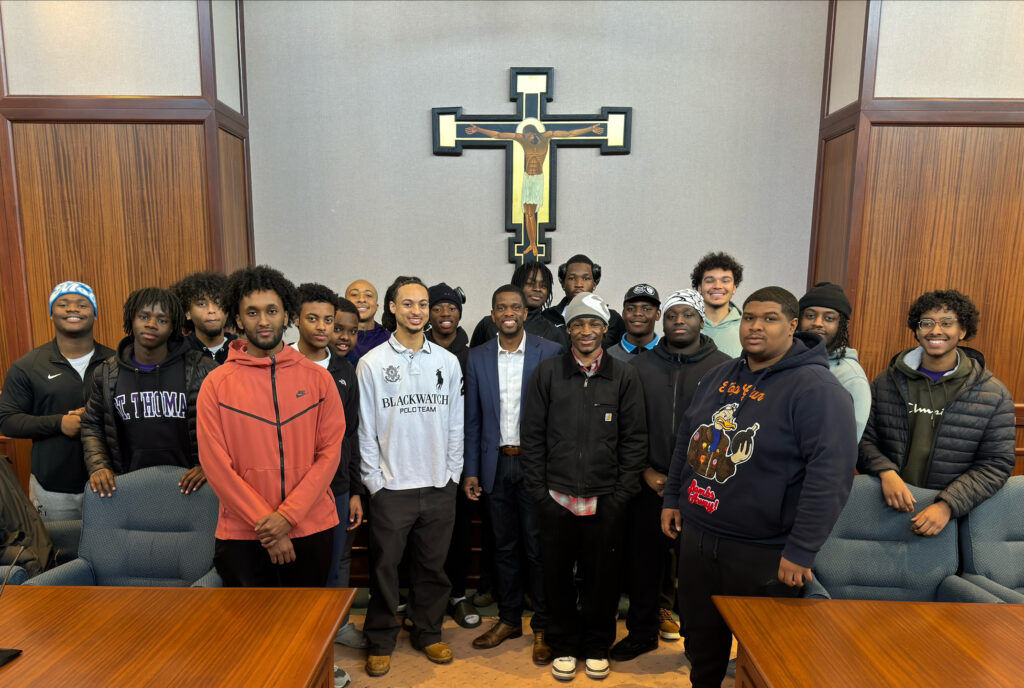
Dave Nimmer
It dawned on me somewhere between Tomah and La Crosse as we rolled through the Wisconsin woodlands on Amtrak’s Empire Builder, heading back to the Twin Cities after four days in Chicago looking at impressionist paintings, listening to the blues and walking through Grant Park, where Mayor Richard Daley’s cops met the Vietnam War’s youthful antagonists.
The backbone of my life as a senior citizen, the sinew that holds it together, comes from the liberal arts part of my college degree. The diploma from the University of Wisconsin says I’m a journalism major, but it’s the “bachelor of arts” part that sticks with me.
I realize the emphasis these days for a college education must be on acquiring skills and knowledge necessary to land a job, particularly in the eyes of parents shelling out big bucks. But at 74, I’m remembering the classes in history, political science, music and philosophy. They add to the content, color and comfort of my life.
To any student at St. Thomas grumbling about having to take two philosophy and three theology courses to graduate, I’d say, “Trust me. When you're older and grayer, from these you will find your comfort.”

(Photo by Jim Shoop)
I never spent much time in art museums when I was gainfully employed. Now that I’m properly retired, my friend Cindy Lamont and I spent a day wandering through the Art Institute of Chicago: 260,000 works of art encompassing 5,000 years of human expression from cultures around the world. The ones that grabbed my attention were paintings by Claude Monet – 30 of them – including his famous Water Lilies and six of his Haystacks. That leaves 23 I never did know about and got close enough to in Chicago to see the brush strokes, including a mountain valley scene with subtle sunlight and shadows, shapes and shades. I was reminded of a hike in Glacier National Park.
As I walked from one Monet to another, I kept thinking about that art history class I almost took but passed by because I didn’t think it had much to do with journalism and the career I hoped I had ahead of me.

(Photo by Jim Shoop)
I didn’t need a course to understand what had gone on in Grant Park as Cindy and I strolled along, the great lake on our right and the pricey shops of Chicago’s Miracle Mile on our left. Our traveling companions, Jim and Pris Shoop, had been in Chicago in August 1968, as Jim covered the Democrat National Convention that nominated Hubert Humphrey for president. They saw the confrontation between the cops and the war protesters, which led to a National Guard callout: 7,500 guardsmen to reinforce 12,000 Chicago cops. The images of some officers clubbing protesters were fodder for gavel-to-gavel television coverage, seriously damaging the image of the city and the party. Shoop recalled that some protesters looked for trouble, prodding and provoking, and he marveled at the restraint of the National Guard troops. They stood at port arms, he said, neither budging nor reacting.

(Photo by Jim Shoop)
Six blocks away from the gardens of Grant Park, we ended the day in the bar of Buddy Guy, Chicago’s man of the blues. Buddy was on tour but Eddie Taylor Jr. was more than enough to satisfy my blues craving. His father played with John Lee Hooker, and Eddie Jr. carried on: sweet and sorrowful, sensuous and soulful. The audience was a beautiful blend of generations, colors and cultures.
For those Tommies who take Chris Kachian’s Understanding Music and Culture course, they get exposed, I bet, to the blues. His tastes and interests are eclectic. And the man plays a mean mouth harp.






